Assassin’s Creed’s wrist blade has become the go-to, small yet effective weapon in enacting assassinations. I have curated this guide to take a leap of faith into the history, learning about the overall design and various modifications that various Assassin Brotherhoods have adopted since the beginning.
- Wrist blade, iconic in Assassin’s Creed, evolves across eras with diverse designs.
- Its modifications include Hidden bolt, Phantom Blade for lethal bolts, Hook Blade for speed, and Poison Blade for a slow demise.
- Variations include Hidden gun, Dart launcher, Hidden foot blade, Composite Blade, Two-Pronged Blade, Shock Blade, and Pivot Blade.
- It is not exclusive to assassins; templars claim it as a trophy by assassinating.
History Of Assassin’s Creed Wrist Blade
The history of the wrist blade dates back to earlier times, and its adaptations and a few modifications continue to the modern era. Here is the complete breakdown of the overall known history of wrist/hidden blades in Assassins’ Creed games.
The Earlier Times
The history of the wrist blade as a signature weapon for the Assassins of the Brotherhood traces back to the 5th Century BCE.
- The wrist blade was first wielded by Darius, who used it to assassinate King Xerxes I. Following this, the blade was passed on to Aya, the wife of Bayek.
- Bayek of Siwa, a Medjay in Ancient Egypt, received the wrist blade from Aya.
- During its early use, Bayek accidentally severed his finger while launching the blade due to its sharpness and faster unloading mechanism.
- In the 9th century, Eivor Varinsdottir of the Raven Clan, a shieldmaiden featured in Assassin’s Creed Valhalla, wielded a concealed weapon resembling the wrist blade. Eivor’s hidden blade was mounted on the top of the left hand’s wrist.
- The usage of wrist blades continued to evolve, and by the 12th century, during the era of Altaïr Ibn-La’Ahad, the weapon became widely adopted within the Assassin Brotherhood.
- Altaïr, a Mentor of the Levantine Brotherhood in 1191, showcased the dual hidden blade technique.
- Following this, the right to bear two wrist blades became reserved for Master Assassins.
Here’s a YouTube video that shows the origin of the Wrist Blade starting from the 5th Century BCE.

The Middle Ages
Advancements in hidden blade technology during the 15th century removed the need for a wrist flick, enabling a closed-fist method for extending and retracting the blade.
Giovanni Auditore was the first to adopt this closed-fist styling. This era also introduced modifications like the hook and foot blades, utilized by Ottoman and Indian Assassins, respectively.
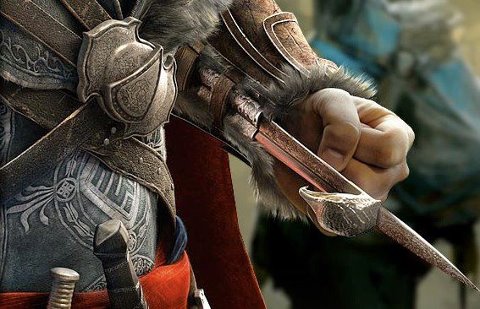
Two centuries later, dual-wielding wrist blades became a common practice among Caribbean and Colonial Assassins in their pursuit of the Templar order.
Dual-wielding was a fan-favorite among the AC community, as suggested by the following Subreddit Post.

The Modern Era
The hidden blade that was part of an Assassin’s attire slowly turned into a traditional offering and a rare sight. In the early 20th century, most assassins still continued to use wrist blades for close combat. However, other effective weapons were also put to use and replaced the usage of the hidden blade.
Moreover, the wearing of a hidden blade became associated mainly with a high-ranking assassin. In some instances, the wrist blade was also used as a ceremonial gift.
A Similar Read: Best Assassin’s Creed Valhalla PC Settings For High FPS
Design Of Wrist Blade
Assassin Creed’s wrist blade designs have evolved over the centuries.
- In Altaïr Ibn-La’Ahad’s time, a spring mechanism linked to a ring on the little finger was used to extend the blade with a wrist flick.
- Earlier assassins, following Bayek’s tradition, severed a finger to use the blade with a clenched fist, symbolizing commitment to the Brotherhood.
- By the late 15th century, a more advanced and finger-friendly design emerged, avoiding easy identification by enemies.
Initially crafted from common metals, Altaïr, using the Apple of Eden, discovered a lost Isu alloy formula, enhancing the wrist blade. To prevent its misuse, Altaïr destroyed all records of the formula upon his death. Subsequent modifications by Ezio and Giovanni Auditore enhanced the wrist blade’s overall design, functionality, and aesthetics, featuring two coils, three gears, a chain, screws, sprockets, and a leather bracer hide.
The practicality, ergonomically and combat-wise, of the Wrist Blade is also widely discussed in this YouTube video.
This Might Interest You: Assassin’s Creed Valhalla Grimes Graves
Various Wrist Blade Modifications
Wrist blade saw modifications in the era of the Italian Brotherhood. Ezio and his Father Giovanni broke their hidden blades during some battle with Templars. As a result, assassins resorted to using swords and other forms of weapon arsenal for combat and reserved wrist blades for assassinations only.
Moreover, the limited usage of the wrist blade allowed room for improvement and creativity. Throughout centuries, assassins with the aid of allies made wrist blade modifications, enabling taking out their targets quite efficiently. Here are a few famous modifications known so far.
Hidden Bolt
The hidden bolt was an early modification to the hidden blade, allowing it to fire small crossbow bolts. Francesco Vecellio, an apprentice of Ezio Auditore, experimented with this modification, but Ezio forbade its use.
Phantom Blade
Arno Victor Dorian utilized the Phantom Blade modification in Assassin’s Creed Unity, enabling the firing of lethal crossbow bolts for ranged attacks. He extended this modification to include bolts infused with berserk or toxins, showcasing the evolution of the wrist blade’s capabilities.
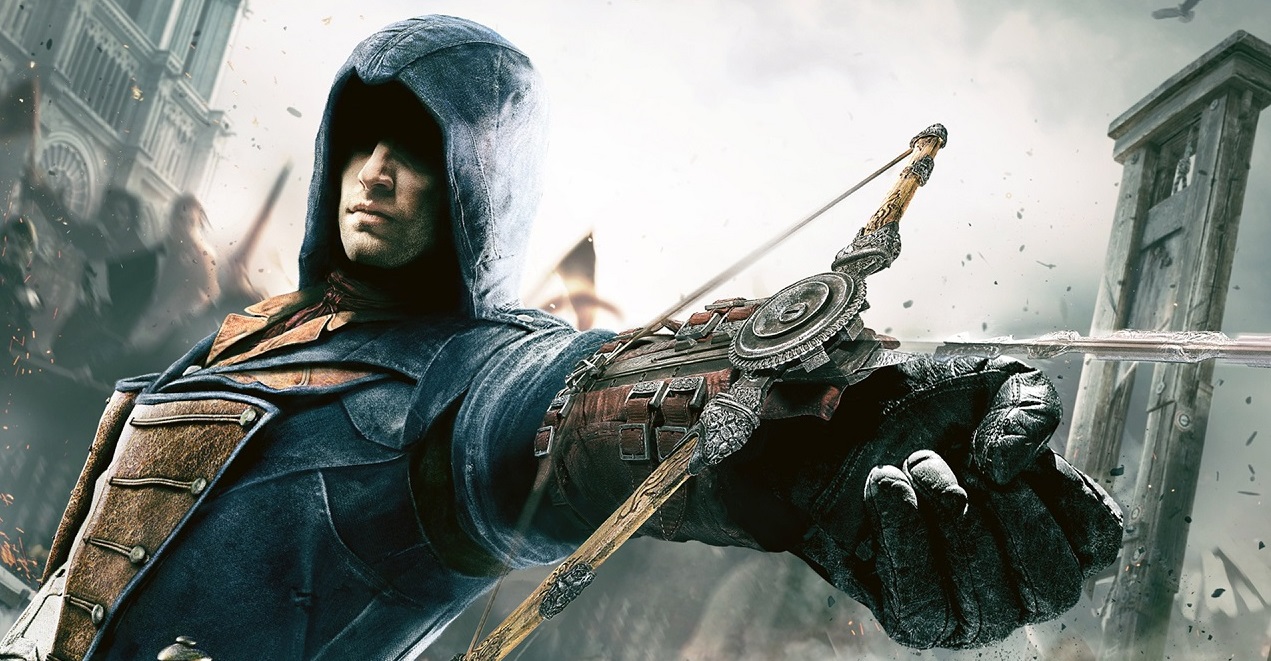
You can check out how the Phantom Blade functioned in real life from this YouTube video.
Hook Blade
The Ottoman Brotherhood introduced the hook blade modification, initially provided by Assassin Yusuf to Ezio. This modification featured a medium-sized hook in place of the hidden blade, primarily designed for agile navigation across urban landscapes. Additionally, the hook blade found utility in combat, reflecting a versatile adaptation by the assassins of that era.

Poison Blade
Altaïr Ibn-La’Ahad pioneered the creation of the poison blade modification, injecting poison into the hollow space of the blade. This modification served to eliminate smaller targets or create diversions, allowing for strategic assassinations of high-profile targets. The poisoned wrist blade, when used, induced a slow and fearsome demise in the target.
Hidden Gun
Altaïr Ibn-La’Ahad pioneered the hidden gun modification, later adopted by Ezio Auditore. Used during the assassination of Abbas Sofian, this modification featured a wheellock-based mechanism, allowing a small, limited-ammo firearm to deploy with a loud sound and a noticeable smoke cloud.
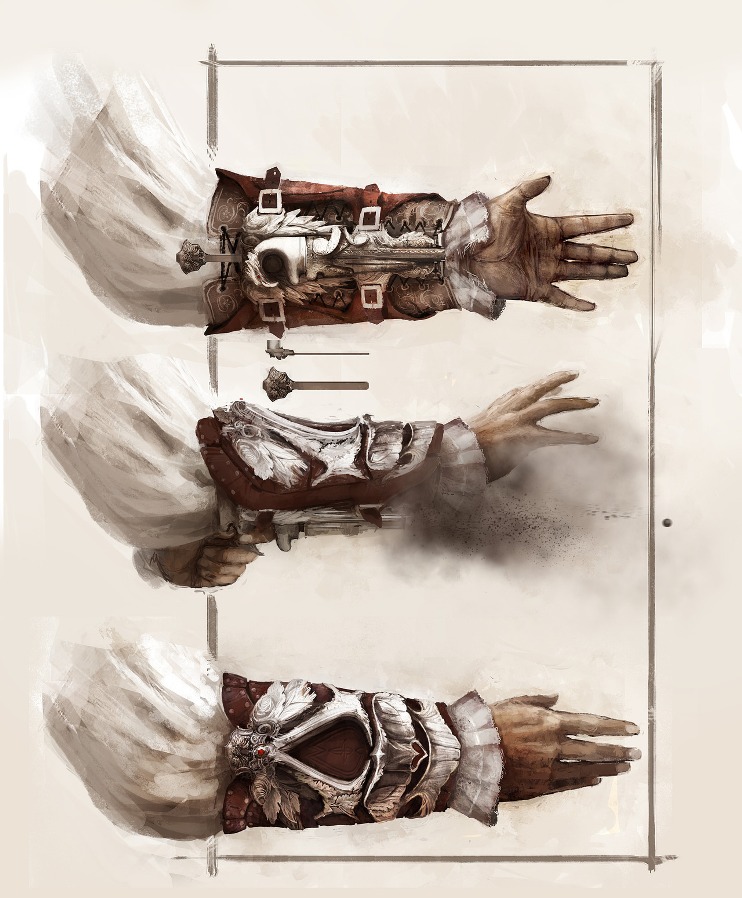
An Interesting Read: Assassin’s Creed Odyssey Best Abilities Guide
Dart Launcher
The introduction of dart-based modifications to the wrist blade began with the sleep dart used by Bayek of Siwa. However, it was later, during Ezio Auditore’s era, that a more advanced poison dart launcher modification was introduced by Leonardo da Vinci.
Hidden Footblade
Many enemies of the Assassin Brotherhood became accustomed to the wrist-equipped blade. So, Shao Jun, a Chinese assassin, modified the hidden blade and installed it into her footwear, allowing her to take down targets by striking them with a foot blade.
Composite Blade
The composite blade modification allowed an assassin to separate the blade from the wrist holder, adding versatility to combat. Featured in the Assassin’s Creed movie, Callum Lynch wields the composite blade and is seen taking out targets quickly and without raising much suspicion.
This Might Interest You: Complete Assassin’s Creed Odyssey Lokris Fort Guide
Two-Pronged Blade
The two-pronged blade worked very similarly to a standard-issue wrist blade in Assassin’s Creed. The notable difference was that a singular blade was replaced with two sharp and thinner blades placed adjacent.
Additionally, the model of a two-pronged blade was later adapted in the 21st century to create another modified wrist blade called the shock blade.
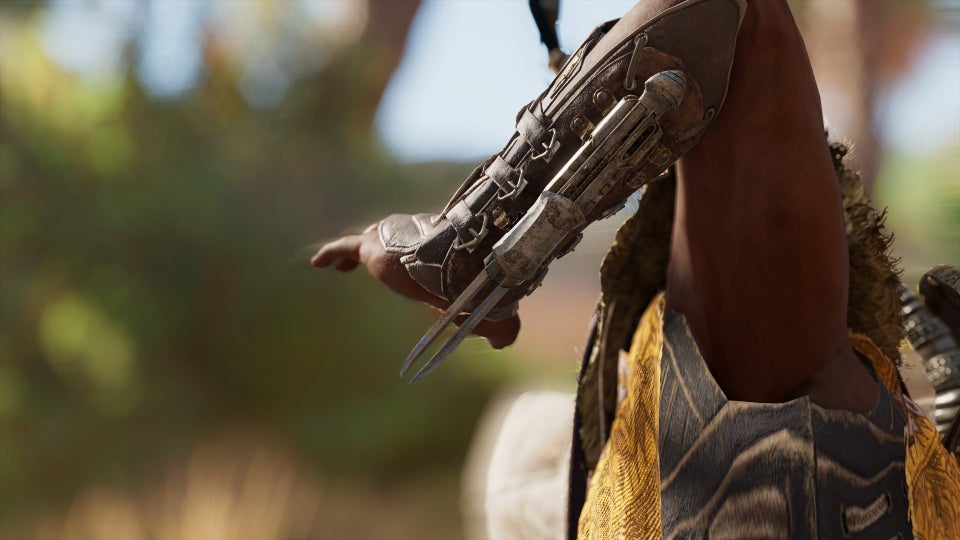
Shock Blade
As mentioned above, the shock blade was the improved iteration of the two-pronged blade. When the weapon penetrates a target’s skin, it electrocutes the flesh by generating a high-voltage electric arc. The shock blade damages the insides of a target by cauterizing the wound.
Pivot Blade
From Assassin’s Creed III, Connor was the first assassin to have used the pivot blade in combat against colonial templars. This wrist blade modification allowed the wielder to rotate the hidden blade by 90 degrees, turning the lethal and sharp wrist blade into a dagger. Arguably, the pivot blade was used mainly by Connor as a means of offense and defense strategies. He would use it to deflect the incoming attacks as the blade had pretty high durability.
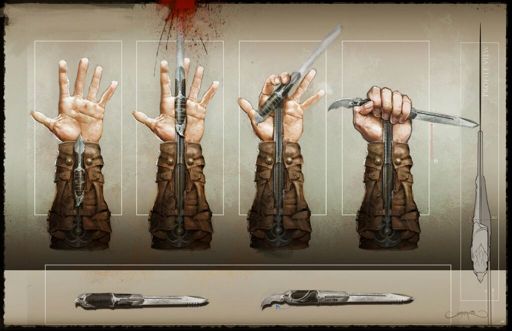
Assassin’s Creed Wrist Blade Uses
Some assassins who defected to the Templars, such as Shay Cormac and Vali cel Tradat, continued to use the wrist blade as part of their arsenal. Despite the shift in allegiance, these individuals retained the deadly weapon associated with the Assassin Brotherhood.

Moreover, there were also instances where Templars would take the hidden blade as a trophy by killing an assassin. Haytham Kenway from Assassin’s Creed III was one of the notorious assassins known to have killed a British assassin called Miko and took away his blade for personal use.

That is pretty much everything you need to know about Assassin’s Creed’s wrist blade for now. Which legendary assassin has been your favorite since the first game? Let me know more of your thoughts in the comments section below.
A Similar Read: All Assassin’s Creed Valhalla Skills Locations
Thanks! Do share your feedback with us. ⚡
How can we make this post better? Your help would be appreciated. ✍



